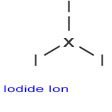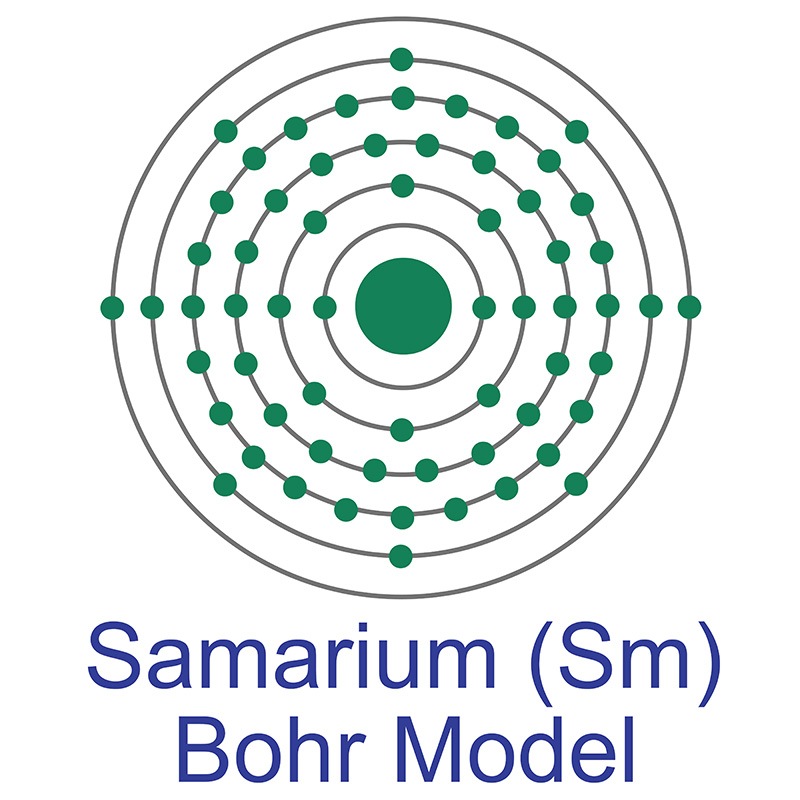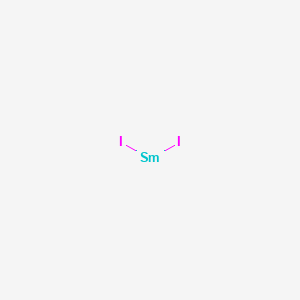SECTION 1. IDENTIFICATION
Product Name: Samarium(II) Iodide
Product Number: All applicable American Elements product codes, e.g. SM2-I-02
, SM2-I-025
, SM2-I-03
, SM2-I-035
, SM2-I-04
, SM2-I-05
CAS #: 32248-43-4
Relevant identified uses of the substance: Scientific research and development
Supplier details:
American Elements
10884 Weyburn Ave.
Los Angeles, CA 90024
Tel: +1 310-208-0551
Fax: +1 310-208-0351
Emergency telephone number:
Domestic, North America: +1 800-424-9300
International: +1 703-527-3887
SECTION 2. HAZARDS IDENTIFICATION
OSHA Haz Com: CFR 1910.1200: Acute Toxicity - Oral [Category 4]
Skin Corrosion/Irritation [Category 2]
Eye Damage/Irritation [Category 2A]
Specific Target Organ Toxicity (Single Exposure) [Category 2]
Specific Target Organ Toxicity (Single Exposure) [Category 3]
Specific Target Organ Toxicity (Repeated Exposure) [Category 1]
Flammable Liquids [Category 2]
Signal word: Danger!
Hazard Statement(s): Causes serious eye irritation
Causes skin irritation
Harmful if swallowed
Highly flammable liquid and vapor
May cause damage to organs: Nervous System
May cause respiratory irritation.
Causes damage to organs: Liver Nervous System Kidney through prolonged or repeated exposure.
Pictogram(s) or Symbol(s):
Precautionary Statement(s):
[Prevention] Do not eat, drink or smoke when using this product. Wash hands and face thoroughly after handling. Wear
protective gloves. Wear eye and face protection. Do not breathe fume, mist, vapors or spray. Wash all
exposed skin thoroughly after handling. Avoid breathing fume, mist, vapors or spray. Use only outdoors or
in a well-ventilated area. Keep away from heat, sparks, open flames or other hot surfaces. - No smoking.
Keep container tightly closed. Ground or bond container and receiving equipment. Use explosion-proof
electrical, ventilating, lighting, and equipment. Use only non-sparking tools. Take precautionary measures
against static discharge. Wear protective gloves, eye protection and face protection.
[Response] If swallowed: Immediately call a poison center or doctor. Rinse mouth. If on skin: Wash with plenty of
water. If skin irritation or rash occurs: Get medical advice/attention. Take off contaminated clothing and
wash it before reuse. If in eyes: Rinse cautiously with water for several minutes. Remove contact lenses, if
present and easy to do. Continue rinsing. If eye irritation persists: Get medical advice or attention. If
exposed or concerned: Call a poison center or doctor. If inhaled: Remove person to fresh air and keep
comfortable for breathing. Call a poison center or doctor if you feel unwell. Get medical advice or attention
if you feel unwell. If on skin (or hair): Take off immediately all contaminated clothing. Rinse skin with water
or shower. In case of fire: Use dry chemical, CO2, water spray or alcohol-resistant foam to extinguish.
[Storage] Store locked up. Store in a well-ventilated place. Keep container tightly closed. Store in a well-ventilated
place. Keep cool.
[Disposal] Dispose of contents and container in accordance with US EPA guidelines for the classification and
determination of hazardous waste listed in 40 CFR 261.3. (See Section 13)
Hazards not otherwise classified: [HNOC] May form explosive peroxides.
SECTION 3. COMPOSITION/INFORMATION ON INGREDIENTS
Substance/Mixture: Mixture
Components: Samarium(II) Iodide (ca. 0.1mol/L in Tetrahydrofuran)
Percent: ....
CAS Number: 32248-43-4
Molecular Weight: 404.17
Chemical Formula: SmI2
SECTION 4. FIRST AID MEASURES
Inhalation: Call a poison center or doctor if you feel unwell. Effects of exposure (inhalation) to substance may be
delayed. Inhalation of vapors or contact with substance will result in contamination and potential harmful
effects. Move victim to fresh air. Give artificial respiration if victim is not breathing. Administer oxygen if
breathing is difficult. Keep victim warm and quiet. Treat symptomatically and supportively. Ensure that
medical personnel are aware of the material(s) involved and take precautions to protect themselves.
Skin contact: Call a poison center or doctor if you feel unwell. Effects of exposure (skin contact) to substance may be
delayed. Remove and wash contaminated clothing before re-use. Remove and isolate contaminated
clothing and shoes. In case of contact with substance, immediately flush skin with running water for at
least 20 minutes. Treat symptomatically and supportively. Ensure that medical personnel are aware of the
material(s) involved and take precautions to protect themselves.
Eye contact: IMMEDIATELY flush eyes with running water for at least 15 minutes, keeping eyelids open. Contact with
material may irritate or burn eyes. Call emergency medical service. Move victim to fresh air. Check for and
remove any contact lenses. Keep victim warm and quiet. Treat symptomatically and supportively. Effects of
exposure to substance may be delayed. Ensure that medical personnel are aware of the material(s)
involved and take precautions to protect themselves.
Ingestion: Harmful if swallowed. Do not induce vomiting with out medical advice. Effects of exposure (ingestion) to
substance may be delayed. Call a physician or Poison Control Center immediately. Do not use mouth-tomouth
method if victim ingested the substance; give artificial respiration with the aid of a pocket mask
equipped with a one-way valve or other proper respiratory medical device. Loosen tight clothing such as a
collar, tie, belt or waistband. If a person vomits place them in the recovery position so that vomit will not
reenter the mouth and throat. Rinse mouth. Keep victim warm and quiet. Treat symptomatically and
supportively. Ensure that medical personnel are aware of the material(s) involved and take precautions to
protect themselves.
Symptoms/effects:
Acute: Redness.
Delayed: May have effects on the respiratory tract.
Immediate medical attention: WARNING: It might be hazardous to the person providing aid to give mouth-to-mouth respiration, because
the inhaled material is harmful. If breathing has stopped, perform artificial respiration. Use first aid
treatment according to the nature of the injury. Ensure that medical personnel are aware of the material(s)
involved and take precautions to protect themselves.
SECTION 5. FIREFIGHTING MEASURES
Suitable extinguishing media: Dry chemical, CO2 , water spray, or alcohol-resistant foam. Consult with local fire authorities before
attempting large scale fire fighting operations.
Hazardous combustion products: These products include: Halogenated compounds
Other specific hazards: Closed containers may explode from heat of a fire.
Special precautions for fire-fighters:
Use water spray or fog; do not use straight streams. Dike fire-control water for later disposal; do not scatter the material. CAUTION: All these products
have a very low flash point: Use of water spray when fighting fire may be inefficient. Do not use straight streams. Runoff to sewer may create fire or
explosion hazard. Containers may explode when heated. Move containers from fire area if you can do it without risk.
Special protective equipment for fire-fighters:
Wear positive pressure self-contained breathing apparatus (SCBA). Structural fire fighters' protective clothing provides limited protection in fire situations
ONLY; it may not be effective in spill situations. Wear chemical protective clothing which is specifically recommended by the manufacturer. It may
provide little or no thermal protection.
SECTION 6. ACCIDENTAL RELEASE MEASURES
Personal precautions: Avoid contact with skin, eyes, and clothing. Keep people away from and upwind of spill/leak. Use sparkproof
tools and explosion-proof equipment. Remove all sources of ignition. Do not touch damaged
containers or spilled material unless wearing appropriate protective clothing (Section 8). Warn
unnecessary personnel to move away. Stop leak if you can do it without risk. Ensure adequate ventilation.
Isolate the hazard area and deny entry to unnecessary and unprotected personnel.
Personal protective equipment: Wear eye protection (splash goggles) and face protection (full length face shield). Lab coat. Vapor
respirator. Be sure to use a MSHA/NIOSH approved respirator or equivalent. Wear protective gloves
(nitrile).
Emergency procedures: Isolate area until gas has dispersed. Do not clean-up or dispose except under supervision of a specialist.
In case of a spill and/or a leak, always shut off any sources of ignition, ventilate the area, and excercise
caution. Do not touch damaged containers or spilled material unless wearing appropriate protective
clothing. Warn personnel to move away. Prevent entry into sewers, basements or confined areas; dike if
needed.
Methods and materials for containment and cleaning up:
ELIMINATE all ignition sources (no smoking, flares, sparks, or flames in immediate area). All equipment used when handling the product must be
grounded. Stop leak if without risk. Ventilate the area. Absorb with an inert material and put the spilled material in an appropriate waste disposal
container. Use clean non-sparking tools to collect absorbed material.
Environmental precautions:
Keep away from living quarters. Prevent further leakage or spillage if safe to do so. Water runoff can cause environmental damage. Prevent entry into
sewers, basements or confined areas; dike if needed.
SECTION 7. HANDLING AND STORAGE
Precautions for safe handling: Do NOT breath gas, fumes, vapor, or spray. Do not ingest. Avoid contact with skin and eyes. Keep away
from heat and sources of ignition. Use explosion-proof equipment. Use only non-sparking hand tool when
handling this product. Ground all equipment containing material. Take measures to prevent build up of
electrostatic charge. Good general ventilation should be sufficient to control airborne levels. Keep
container dry. Handle and open container with care. Wear suitable protective clothing, gloves and eye/face
protection. When using do not eat, drink, or smoke. Keep away from sources of ignition.
Conditions for safe storage: Store locked up. Keep containers tightly closed in a cool, well-ventilated place. Keep away from sources of
ignition. Store and use away from heat, sparks, open flame, or any other ignition source. Keep away from
incompatibles. Containers which are opened must be carefully resealed and kept upright to prevent
leakage. Avoid prolonged storage periods. Store under inert gas (e.g. Argon). Moisture sensitive.
Storage incompatibilities: Combustible substances, Store away from oxidizing agents
SECTION 8. EXPOSURE CONTROLS/PERSONAL PROTECTION
Exposure limits: No data available
Appropriate engineering controls:
Good general ventilation should be sufficient to control airborne levels. Ventilation is normally required when handling or using this product. Eyewash
fountains should be provided in areas where there is any possibility that workers could be exposed to the substance. Follow safe industrial
engineering/laboratory practices when handling any chemical.
Personal protective equipment
Respiratory protection: Vapor respirator. Be sure to use a MSHA/NIOSH approved respirator or equivalent.
Hand protection: Wear protective gloves.
Eye protection: Splash goggles.
Skin and body protection: Lab coat.
SECTION 9. PHYSICAL AND CHEMICAL PROPERTIES
Physical state (20°C): Liquid
Form: Liquid
Color: Blue - Deep blue
Odor: Characteristic
Odor threshold: No data available
Melting point/freezing point: No data available
Boiling point/range: No data available
Decomposition temperature: No data available
Relative density: 0.92
Kinematic Viscosity: No data available
Partition coefficient: No data available
n-octanol/water (log Pow)
Flash point: -19°C (-2°F)
Flammability (solid, gas): No data available
pH: No data available
Vapor pressure: No data available
Vapor density: No data available
Dynamic Viscosity: No data available
Evaporation rate: No data available
(Butyl Acetate = 1)
Autoignition temperature: No data available
Flammability or explosive limits: No data available
Lower: No data available
Upper: No data available
Solubility(ies):
SECTION 10. STABILITY AND REACTIVITY
Reactivity: Not Available.
Chemical Stability: Moisture sensitive.
Possibility of Hazardous Reactions: In use, may form flammable/explosive vapor-air mixture.
Conditions to avoid: Exposure to moisture. Moisture sensitive.
Incompatible materials: Oxidizing agents
Hazardous Decomposition Products: No data available
SECTION 11. TOXICOLOGICAL INFORMATION
Acute Toxicity:
No data available
Skin corrosion/irritation:
No data available
Serious eye damage/irritation:
No data available
Respiratory or skin sensitization:
No data available
Germ cell mutagenicity:
No data available
Carcinogenicity:
No data available
IARC: No data available NTP: No data available OSHA: No data available
Reproductive toxicity:
No data available
Routes of Exposure: Inhalation, Eye contact, Ingestion, Skin contact.
Symptoms related to exposure:
Overexposure may result in serious illness or death. Skin contact may result in inflammation; characterized by itching, scaling, reddening, or occasionally
blistering. Skin contact may result in redness, pain or dry skin. Eye contact may result in redness or pain. Inhalation causes irritation of the lungs and
respiratory system.
Potential Health Effects:
Skin and eye contact may result in irritation. Inhalation causes irritation of the lungs and respiratory system.
Target organ(s):
May cause damage to organs: Nervous System
May cause respiratory irritation.
SECTION 12. ECOLOGICAL INFORMATION
Ecotoxicity
Fish: No data available
Crustacea: No data available
Algae: No data available
Persistence and degradability: No data available
Bioaccumulative potential (BCF): No data available
Mobillity in soil: No data available
Partition coefficient:
n-octanol/water (log Pow)
No data available
Soil adsorption (Koc): No data available
Henry's Law:
constant (PaM3/mol)
No data available
SECTION 13. DISPOSAL CONSIDERATIONS
Disposal of product: Recycle to process if possible. It is the generator's responsibility to comply with Federal, State and Local
rules and regulations. You may be able to dissolve or mix material with a combustible solvent and burn in a
chemical incinerator equipped with an afterburner and scrubber system. This section is intended to provide
assistance but does not replace these laws, nor does compliance in accordance with this section ensure
regulatory compliance according to the law. US EPA guidelines for Identification and Listing of Hazardous
Waste are listed in 40 CFR Parts 261. The product should not be allowed to enter the environment, drains,
water ways, or the soil.
Disposal of container: Dispose of as unused product. Do not re-use empty containers.
Other considerations: Observe all federal, state and local regulations when disposing of the substance.
SECTION 14. TRANSPORT INFORMATION
DOT (US)
UN number:
UN2056
Proper Shipping Name:
Tetrahydrofuran
Class or Division:
3 Flammable liquid
Packing Group:
II
IATA
UN number:
UN2056
Proper Shipping Name:
Tetrahydrofuran
Class or Division:
3 Flammable liquid
Packing Group:
II
IMDG
UN number:
UN2056
Proper Shipping Name:
Tetrahydrofuran
Class or Division:
3 Flammable liquid
Packing Group:
II
EmS number: F-E, S-D
Reportable Quantitiy: 1000 Pounds (454 Kilograms)
SECTION 15. REGULATORY INFORMATION
Toxic Substance Control Act (TSCA 8b.):
This product is NOT on the EPA Toxic Substances Control Act (TSCA) inventory. The following notices are required by 40 CFR 720.36 (C) for those
products not on the inventory list:
(i) These products are supplied solely for use in research and development by or under the supervision of a technically qualified individual as defined in
40 CFR 720.0 et sec.
(ii) The health risks of these products have not been fully determined. Any information that is or becomes available will be supplied on a SDS sheet.
US Federal Regulations
CERCLA Hazardous substance and Reportable Quantity:
SARA 313: Not Listed
SARA 302: Not Listed
State Regulations
State Right-to-Know
Massachusetts Not Listed
New Jersey Not Listed
Pennsylvania Not Listed
California Proposition 65: Not Listed
Other Information
NFPA Rating:
Health: 2
Flammability: 3
Instability: 0
HMIS Classification:
Health: 2
Flammability: 3
Physical: 0
International Inventories
International Inventories
WHMIS hazard class: B2: Flammable Liquid.
D2A: Materials causing other toxic effects. (Very Toxic)
D2B: Materials causing other toxic effects. (Toxic)
SECTION 16. OTHER INFORMATION
Safety Data Sheet according to Regulation (EC) No. 1907/2006 (REACH). The above information is believed to be correct but does not purport to be all inclusive and shall be used only as a guide. The information in this document is based on the present state of our knowledge and is applicable to the product with regard to appropriate safety precautions. It does not represent any guarantee of the properties of the product. American Elements shall not be held liable for any damage resulting from handling or from contact with the above product. See reverse side of invoice or packing slip for additional terms and conditions of sale. COPYRIGHT 1997-2022 AMERICAN ELEMENTS. LICENSED GRANTED TO MAKE UNLIMITED PAPER COPIES FOR INTERNAL USE ONLY.


 The number of electrons in each of samarium's shells is 2, 8, 18, 24, 8, 2 and its electron configuration is [Xe]4f6 6s2. The samarium atom has a radius of 180 pm and a Van der Waals radius of 229 pm. In its elemental form, samarium has a silvery-white appearance.
The number of electrons in each of samarium's shells is 2, 8, 18, 24, 8, 2 and its electron configuration is [Xe]4f6 6s2. The samarium atom has a radius of 180 pm and a Van der Waals radius of 229 pm. In its elemental form, samarium has a silvery-white appearance.  Samarium is not found as free element in nature. It is found in the minerals cerite, gadolinite, samarskite, monazite and bastnäsite. Samarium is classified as a
Samarium is not found as free element in nature. It is found in the minerals cerite, gadolinite, samarskite, monazite and bastnäsite. Samarium is classified as a 
